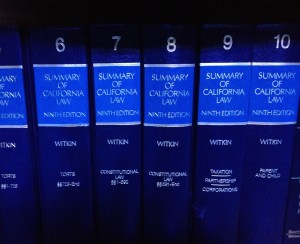Negligence Per Se Is Not a Replacement for “Ordinary Negligence” Claims
“NEGLIGENCE PER SE” IS NOT A SEPARATE TORT FROM “ORDINARY NEGLIGENCE”
Negligence is part of tort law — the branch of civil law that deals with legally recognized “wrongs” committed against other people or property. (Sometimes, those same wrongful acts are also crimes, and punishable under criminal law as well.)
Negligence per se (a form of negligence based on violation of a statute) is not a separate tort from negligence. Negligence per se is merely a legal doctrine which, in appropriate cases, may simplify what the plaintiff has to prove in order to prevail on a negligence claim.
Also, it’s important to realize that not every violation of a statute by a defendant will allow a plaintiff to use negligence per se in his or her case.
NEGLIGENCE PER SE CANNOT ESTABLISH A PRESUMPTION OF NEGLIGENCE BEFORE THE STATUTORY VIOLATION OCCURRED
Since the statutory violation must cause the injury (either as an actual cause or by proximate cause–a legal doctrine establishing a chain of causative events which led to the ultimate injury), plaintiffs cannot use evidence that a defendant violated a statute in order to establish a pattern of negligent behavior or a situation where the defendant was negligent before the injury occurred.
Negligence per se applies only where the statutory violation is a legally recognized cause of the injury which gives rise to the underlying negligence suit or claim.
NOT ALL STATUTES CAN BE USED TO ESTABLISH NEGLIGENCE PER SE
Qualifying statutes can be used only where (a) the type of injury suffered was the type the statute existed to prevent or avoid, and (b) the person or property injured was of the class the statutes was designed to protect.
However, negligence per se is not applicable to all statutes. Some laws contain specific language prohibiting them from being used to establish negligence per se in the case of violations.
For example: if a driver breaks the speed limit, loses control of the vehicle and crashes into another car (as a result of excessive speed), and injuries result, the violation (speeding) caused precisely the kind of injury (damage to people and property in an auto accident) which the statute was designed to prevent (by limiting a the drive’s speed). However, violating the posted speed limit does not establish negligence per se in auto accident cases. This is because the California Vehicle Code states, specifically, that “proof of speed in excess of [posted legal limits]…does not establish negligence as a matter of law.”
Attorneys should review the applicable laws and regulations carefully to determine whether negligence per se may…or cannot…be applied in individual cases, based on the facts and circumstances. Negligence per se is a complex legal doctrine, and its applicability varies substantially based on the individual facts at issue. If you believe you have a negligence-based claim against any person or entity, consult an attorney promptly. Do not rely on this or any other article to evaluate your legal rights and claims.
Delay could damage your claims and legal rights.
***
DISCLAIMER: This article is intended for informational purposes only, does not constitute legal advice to any person or entity, and does not create an attorney-client relationship with any person or entity. Negligence is a complex legal topic, and no single article can provide complete or comprehensive coverage or information about this or any other legal topic or issue. Your personal liability may differ, based on your individual facts and circumstances. If you believe you have a legal claim or issue, or wish to know more about your individual rights, consult an experienced attorney without delay.
















